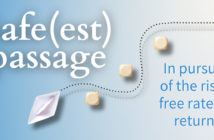by RUSHI SHAH
How do I know which lender is right for my hotel development, acquisition or refinance? What should I know about the pros and cons of each type of capital source?
Capital comes in all forms and flavors. Without the expert guidance of an experienced investment banker, navigating options can be an onerous task with ongoing implications for your cash flow, personal and interest rate risk, eligibility for additional debt, and ability to recoup investment costs and fund future growth. Universal to all capital sources, however, is the need to hedge risk. But to what level and using what combination of levers such as rate, loan-to-value, recourse, term or proceeds, varies widely. Let’s take a look at some of the most common types of capital sources for hotel financing and what borrowers should keep in mind. Each capital source has its fair share of baggage; it’s important to understand the nuances.
Community & Regional Banks
SBA (7a) and 504 Loans
These full-recourse loans allow less-sophisticated borrowers with limited equity to finance 80 percent to 90 percent of the loan’s value, and 504 loans can be used for new construction. However, SBA loans are only offered for small loan sizes, require restrictive administrative approvals and limit how much total SBA exposure a borrower can have on his or her personal balance sheet.
Conventional Bank Loans
Local and regional banks use conventional loans as a loss leader to lure deposits. Loans are typically capped due to the bank’s legal lending limits and restricted lending limits per person with low leverage, and are subject to highly-selective underwriting. Because banks lend to the person, not just on the property, loans are usually full-recourse with required personal guaranties.
Although bank loans can be used to finance construction, they can’t fuel growth as cash out is prohibited. Hotels are also classified as a high-risk asset class from a regulatory perspective and the amount of hospitality exposure banks can keep on their balance sheets, along with their ability to finance longer than a five-year term or outside certain markets, is often handicapped.
Capital Markets/CMBS
CMBS loans are closed through capital market conduit lenders that transfer their risk by pooling the loans and selling them as Commercial Mortgage Backed Securities (CMBS) to investors in the secondary market. CMBS loans represent over one-third of the commercial real estate debt markets, which translates to about $110 billion a year in transactions.
These non-recourse loans are free of personal guaranties and are the top choice for borrowers seeking improved balance sheet management and growth funding. They are available at up to a 75 percent loan-to-value ratio (LTV) and allow unrestricted, tax-free cash out (always consult your tax advisor). Borrowers opting for maximum proceeds have reaped massive cash outs that have allowed them to recoup investment costs, replace expensive equity to buy or build another hotel, fund an upcoming PIP or monetize their accrued equity without selling.
For example, one of our clients had built a new Hampton Inn using a local bank construction loan. Ten months after construction was completed, he contacted us to lead his loan refinance. By 12 months post opening we had closed on a non-recourse, 10-year fixed rate loan and he had pulled out the necessary cash to cover his investment costs.
Because the risk ultimately falls on the bond buyers, lenders are also willing to offer permanent, fixed-rate terms for up to 10 years with 30-year amortizations. Underwriting is slightly more lenient, the credit process more objective, and secondary and tertiary market transactions get approved and closed. The appraisal process is also less constrained, giving intermediaries (and therefore their borrowers) more control over the transaction.
Bond investors, in turn, hedge their longer-term risk with pre-payment restrictions. While CMBS loans are assumable by a future buyer, borrowers paying-off a loan before maturity will still need to make investors whole. This is done through either yield maintenance, where borrowers pay a penalty, or defeasance, where the property is substituted with equitable collateral. Pre-payment rules are preset upfront and borrower favorability depends on market conditions at the time of pay-off. Under either scenario, pre-paying a CMBS loan is a burdensome process that is best avoided.
Life Company & Balance Sheet Lenders
Life companies will also offer 10-year financing at attractive rates, but are extremely selective, cap LTVs at only 60 percent and are very conservative in their underwriting. This is because they keep all of the risk on their books for the life of the loan. Credit criteria is driven by the firm’s target markets and its credit committee’s appetite for specific brands and loan sizes. Loans are typically non-recourse with a 20-year amortization. Where these companies shine is in their more flexible pre-payment options.
In addition to life companies, large investment banks and private equity companies who only work with pre-selected intermediaries like us for loan sizes of $10 million and higher. Because the lenders retain the risk, loans are non-recourse. Terms range from five to 15 years with a higher leverage of 75 percent of value in primary and secondary markets, and 70 percent of value in tertiary markets. Rates are typically from 5 percent. Lenders primarily offer yield maintenance as the option for pre-payment.
Credit Unions
Credit Unions are an attractive intersection between life companies and community banks. Like banks, credit union loans are full recourse, because credit unions are lending based on the person and retain all of the risk on their balance sheets. Unlike banks, however, credit unions aren’t slaves to creating shareholder profits, so they can offer lower pricing. Rates are currently in the 4.5 percent range. Loans are typically available at up to 70 percent LTV for a 10-year term and may include a rate re-set after five years.
Credit unions typically offer flexible pre-payment plans such as step-downs where the penalty reduces after each subsequent year, or allow pre-payment after a two or three-year lockout. National credit unions can lend in markets that may not be core to their headquarters, while regional entities operate within a smaller, more local footprint. But credit unions by nature are selective, risk-averse and are perfectly satisfied with low volume. This is a good example of where an intermediary’s relationships can open doors for borrowers.
Debt Funds
Balance Sheet Construction Debt Fund
There are funds actively financing construction projects with loan amounts $10 million or higher for Hilton, Marriott, Hyatt and IHG brands. Most offer non-recourse construction loans at 70 percent of cost for three years with two one-year extension options. They typically charge a 1 to 2 percent origination fee and a 1 percent exit fee at maturity. These lenders focus on exit underwriting. When it comes time to refinance, they want to ensure the stabilized property’s loan amounts can support a 12 debt yield. Debt yield is calculated by dividing the net operating income by the loan amount. To determine NOI, they will look at the property’s projected cash flow, which must be based off of a 100 percent of market RevPAR penetration. If competitive set RevPAR is 150, the maximum projections allowed would be based on a 150 RevPAR.
Construction debt fund pricing typically ranges from the current one-month LIBOR + 700 basis points to LIBOR + 850 basis points. (Many of our clients choose to recapitalize their existing properties to pull out cash to construct new assets to avoid the higher rates of construction debt.) Loan sizes upwards of $30 million, however, have a different execution with rate ranges from LIBOR + 400 basis points to LIBOR + 600 basis points. Balance Sheet Bridge Debt Fund
Bridge debt funds offer quasi-hard-money, which is best used to fund a PIP or for slightly higher leverage acquisitions. Pricing typically ranges from LIBOR + 300 basis points to an all-in rate of 8.5 percent. The rate and terms are determined by the amount of in-place cash flow and the amount of heavy lifting necessary to achieve stabilization. Lenders react more favorably to small jumps, as opposed to big leaps. For example, if a hotel’s current cash flow is $1 million and it is projected to rise to $1.5 million the borrower would get a lower rate than if it were projected to go to $3 million. Likewise, lenders would offer lower rate to a Hampton Inn funding a minor PIP, compared to funding a reflag to a Four Points by Sheraton.
Loans are typically non-recourse, interest-only and available for a 3-year term, which can be extended. Bridge debt funds charge a 1 to 2 percent lender origination fee, followed by a 1 percent exit fee that is often waived if the same lender finances the permanent loan. Pre-payment requires 12 to 18 months of interest in addition to the exit fee, and cash out is not allowed. Terms are heavily negotiated.
Bottom line, there is more to each capital type than what you can see on the surface. There are pronounced differences even among the same types of lenders. Every deal has a story and every lender reacts to it differently. Leveraging the trusted relationships and experience of a skilled intermediary or investment banker, can give you an edge as you seek financing or capital to grow.





2 Comments
You mentioned that the SBA loans are typically used for small loan sizes. My parents are thinking about building a hotel in the small town that they live in. This is their first commercial building adventure. Would this be a good option for them?
Hi Shaylee,
Thanks so much for your comment. Unfortunately, we cannot provide financial advice as each situation is different. We’d recommend reaching out to financial advisors who can make suggestions for your specific case.